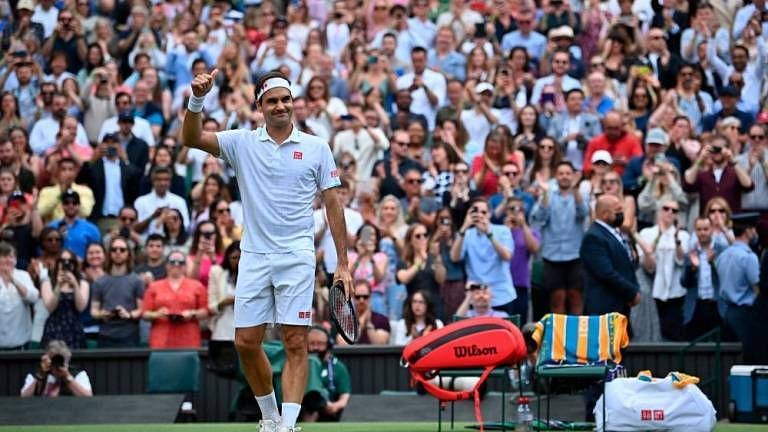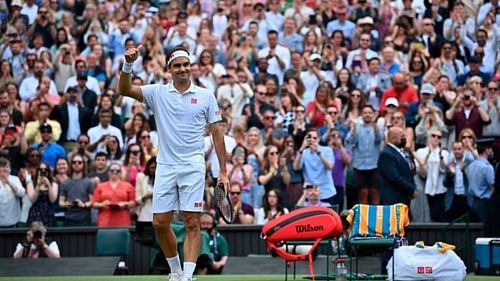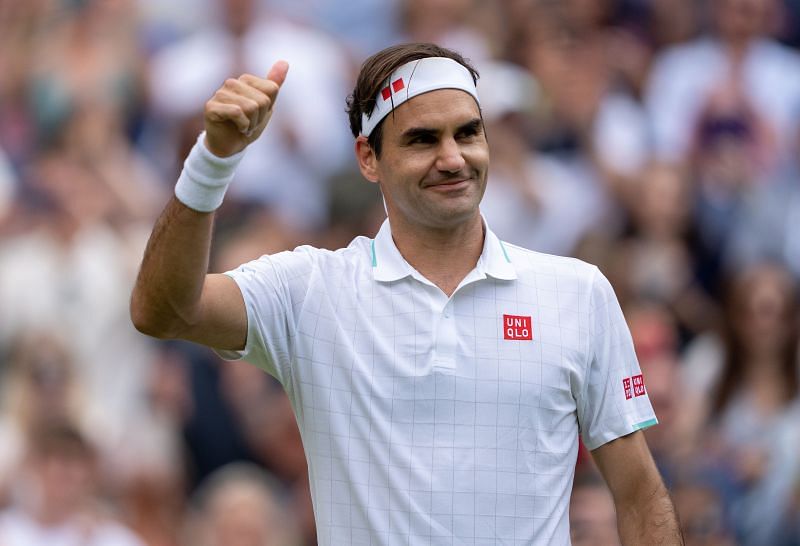
Why does Wimbledon have a Middle Sunday and Manic Monday, and why are they both being cancelled in 2022?

The concepts of 'Middle Sunday' and 'Manic Monday' are unique to Wimbledon. But they won't be a part of the tournament from 2022 onwards, and most fans have mixed feelings about that.
But what are Middle Sunday and Manic Monday, exactly?
Traditionally, there has been no play on the Middle Sunday at Wimbledon, with all third-round matches getting completed by Saturday. The ensuing Monday then sees all 16 fourth-round players - both men's and women's - in action, hence the name 'Manic Monday'.
Earlier, a tennis-free Middle Sunday was required because the grass, as well as the players, needed a day's break ahead of the business end of the tournament. But the practice of no play on the Middle Sunday also had something to do with England traditionally seeing minimal sporting action on Sundays.
It was not before 1974 that there was a professional football match in the country on a Sunday. Football matches on Sundays only became a regular fixture in 1983, and Test matches in England during the 70s and 80s used to take a pause if a Sunday came in between.
For a tournament steeped in rich history and tradition, Wimbledon distinguishes itself from the three other Majors on many counts. Wimbledon is the only Grand Slam tournament that is played on grass, the only one that requires players to wear all-white attire, the only one where the defending champion opens play on Centre Court, and of course, the only one with a Middle Sunday that has no play and a Manic Monday that sees everyone in action.
It was not before 1982 that Wimbledon staged its first-ever final (between John McEnroe and Jimmy Connors) on a Sunday. Before that, the men's singles final used to be held on the second Saturday, and the ladies' final on Friday.
In 1991, the Middle Sunday at Wimbledon saw tennis being played for the first time in 114 years. That was because rain had wreaked havoc with the schedule, causing a massive fixture pile-up; the organisers had no choice but to use the 'rest day' to clear the backlog.
But the departure from tradition apart, Wimbledon organisers also faced other challenges in having matches on the Middle Sunday that year.
"The weather conditions had just forced us into scheduling an extra day's play for the Middle Sunday of The Championships – but right now we had no tickets, no security, no catering, no umpires, no groundstaff, and no precedent to follow," wrote Chris Gorring, the All England Club chief executive at the time, in his book titled 'Holding Court'.
After 1991, only three other years - 1997, 2004 and 2016 - saw action on the Middle Sunday at Wimbledon. And they were all due to the same reason as in 1991 - inclement weather conditions.
But the tradition of Middle Sunday is now set to end. Wimbledon is doing away with its 144-year practice of no matches on the Middle Sunday from next year. And there are several reasons for that.
Owing to the COVID-19 pandemic last year, Wimbledon had to be canceled for the first time since the Second World War. While the tournament recouped its lost revenue thanks to the pandemic insurance it had in place, the cancelation was an eye-opener in many ways.
The organisers realised that wasting an entire day in the middle of the fortnight made little sense from the financial perspective. Moreover, Manic Monday meant that fans often missed out on the key moments, as too many matches happen on the day.
All England Lawn Tennis Club chairman Ian Hewitt announced earlier this year that from 2022, Wimbledon would be played for 14 consecutive days without the break of the Middle Sunday.
"This provides us with the opportunity, at an important time, to enhance the accessibility, reach and fan base of Wimbledon, and tennis, both in the UK and globally," said Hewitt.
In addition, the improved grasscourt technology and maintenance methodologies in place now mean that the surface no longer needs an entire day's rest. That is another reason why Wimbledon can afford to have play on the Middle Sunday from next year.
"Thanks to improved grasscourt technology and maintenance over the past five years or so and other measures, we are comfortable that we are able to look after the courts, most particularly Centre Court, without a full day of rest," Wimbledon announced in a press release.
Hewitt also expressed hope that there would be a 'different kind of atmosphere' on the Middle Sunday at Wimbledon from next year onwards. The tournament is trying to strike a delicate balance between embracing modernity while not completely abandoning its traditional roots.
"It will also ensure greater resilience and fairness of the tournament programme for our competitors and enable us to create a different kind of atmosphere on the Middle Sunday, with a strong focus on the local community in particular," Hewitt added.
Scrapping of Middle Sunday at Wimbledon is 'going with the times': Roger Federer

Eight-time champion Roger Federer has welcomed Wimbledon's decision to do away with no play on the Middle Sunday.
"Look, you've got to love traditions, but the French Open also went to a 15-day event," Roger Federer said earlier this week. "Everybody wants more days. More days means more revenue, more options, more this and that. I get it. I don't think they did it only because of revenue."
"They just think it's going with the times as well," he added. "I think in some ways you liked it because it resets the entire draw for Monday, Wednesday, Friday, Sunday. At the same time, every other tournament does it differently as well. Maybe it's going with the times. I get that."
Nick Kyrgios, who played on the Middle Sunday at Wimbledon in 2016, also talked about his experience last week.
"I played on the Middle Sunday once," Kyrgios said. "I had to finish my match against (Feliciano) Lopez. That was awesome. That was actually incredible. That was a very special match for me, one of my best matches I've played here. It was cool."
It is hard to argue that Wimbledon's move to do away with the Middle Sunday, and with it 'Manic Monday', isn't a step in the right direction. Despite being steeped in tradition, Wimbledon does need to move with the times - just like it did by implementing equal prize money for men and women and installing a roof over Centre Court and Court 1.
All England Lawn Tennis Club chief executive Sally Bolton has expressed hope that tennis action on Middle Sunday will become the new 'tradition' at Wimbledon.
"Over time Wimbledon has continuously evolved to meet changing demands and behaviours of our fans - always changing, always staying the same is something we talk about often," Bolton said.
"We want more of this wonderful event to be available to more people around the world to share in the joy of the Championships," she added. "Including Middle Sunday permanently in our schedule will allow us to do just that and become a new tradition, which we hope we can become immensely proud of. It enables us to do more with the second Monday, which is known as 'manic' for good reason."
'Manic Monday' at Wimbledon will likely be missed by some fans next year. But matches on the previous Sunday would mean more people would get to follow more matches. And of course, the ladies' singles quarterfinalists at Wimbledon would be the happiest of them all, as four of them would have a 'rest day' before their last-eight match from next year.
These are changing times, at Wimbledon and elsewhere, and the abolishing of Middle Sunday is just the latest sign of that.